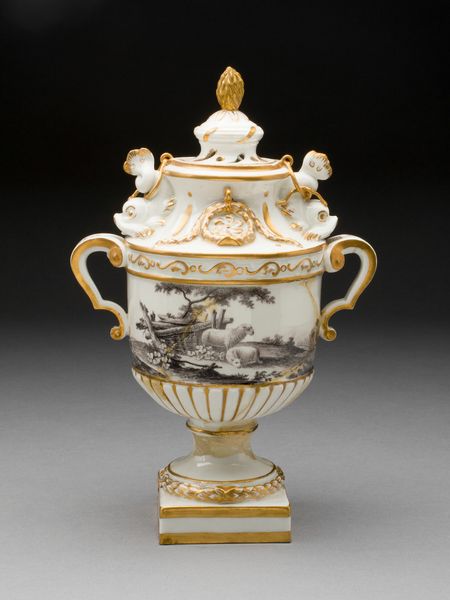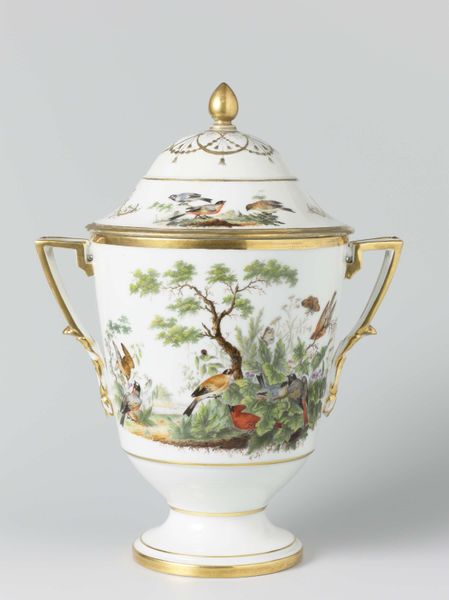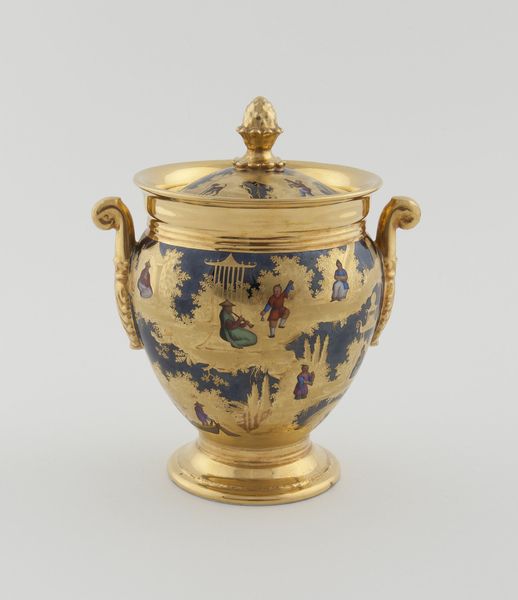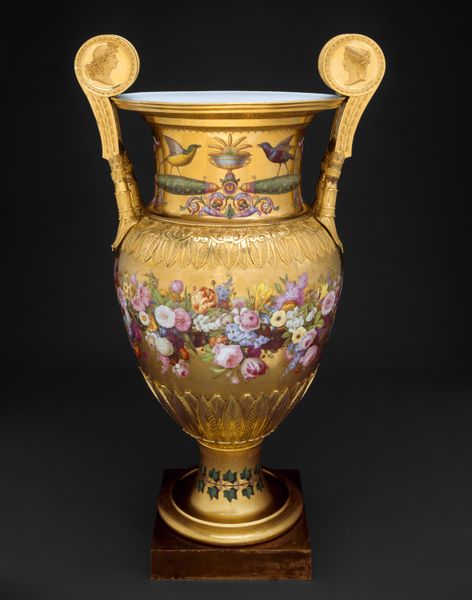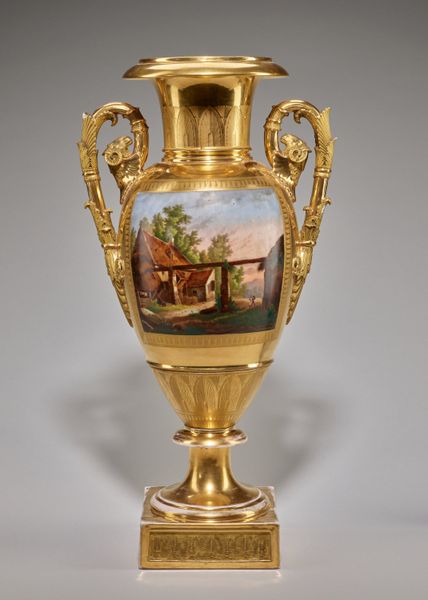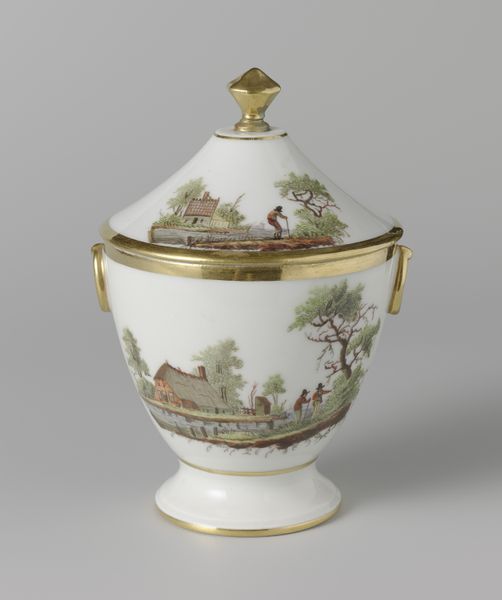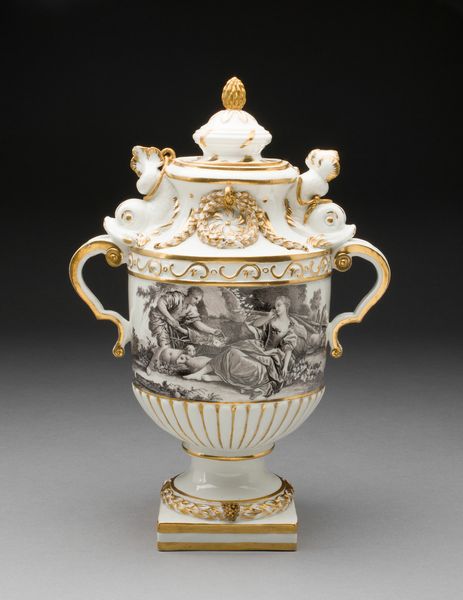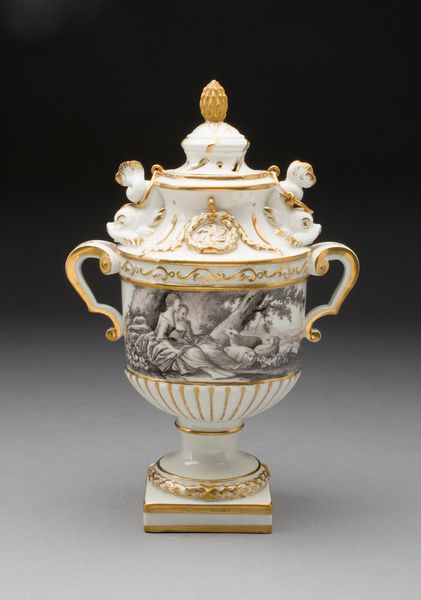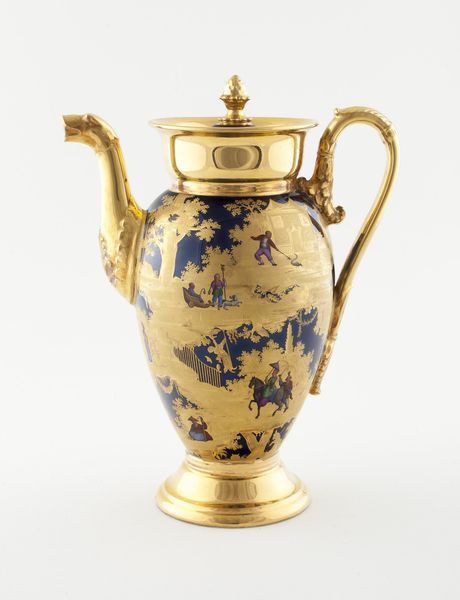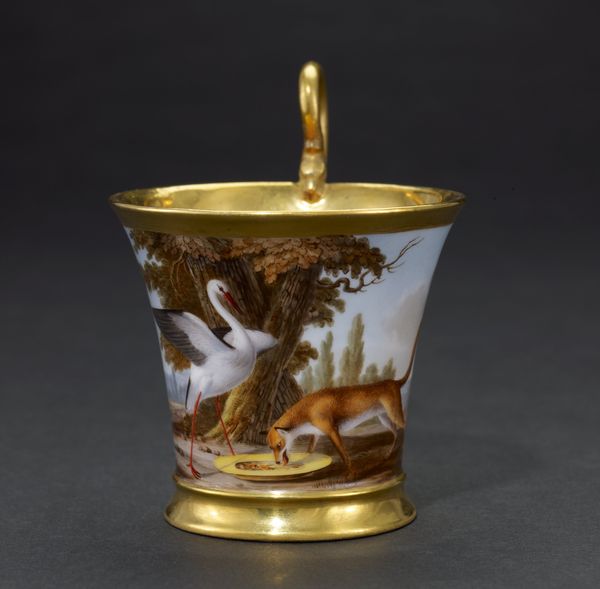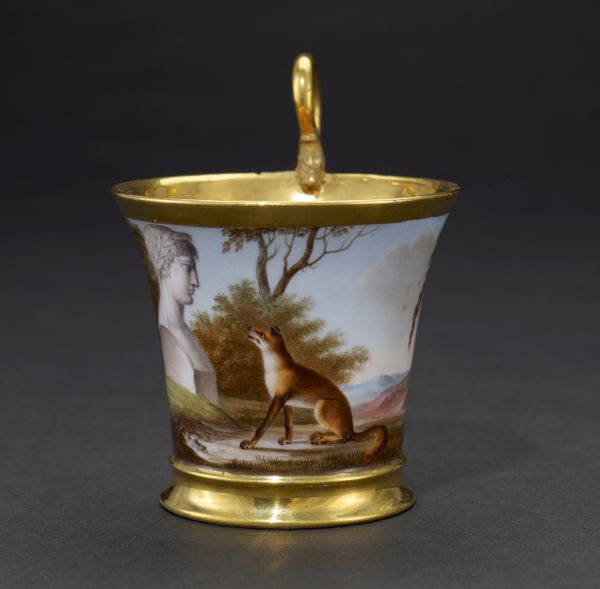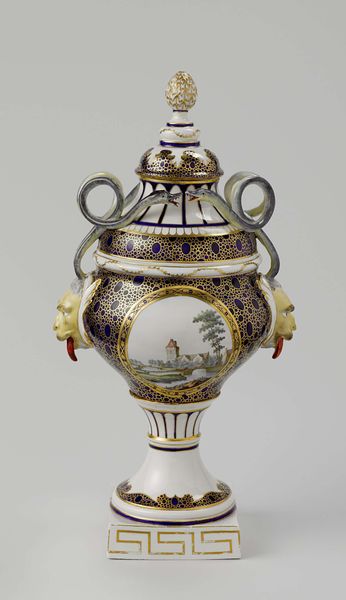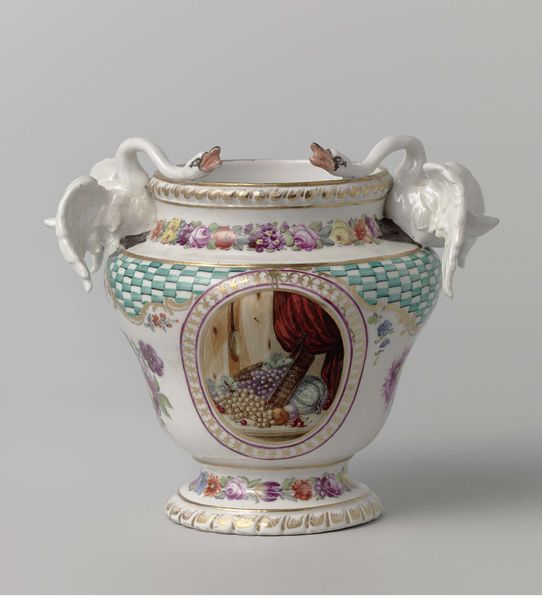
Sugar bowl from a tea service for twelve 1807 - 1808
0:00
0:00
tempera, ceramic, porcelain
#
neoclacissism
#
tempera
#
landscape
#
ceramic
#
porcelain
#
classicism
#
ceramic
#
genre-painting
#
decorative-art
#
miniature
Dimensions: 6 1/4 x 5 5/8 x 3 3/4 in. (15.88 x 14.29 x 9.53 cm)
Copyright: Public Domain
This sugar bowl was produced as part of a tea service, sometime in the early 19th century by Christophe-Ferdinand Caron. The inclusion of such items reflected a burgeoning culture of domesticity and social ritual centered around tea consumption. In Europe, tea, and the porcelain vessels from which it was drunk, became potent symbols of wealth and status. Caron's creation speaks to the intersection of art and industry in the 19th century, catering to the desires of an increasingly affluent bourgeoisie. The imagery of dogs evokes themes of loyalty and leisure, appealing to the values and aspirations of the upper classes, while the classical form gives it a certain cachet. The sugar bowl thus serves as a material manifestation of social stratification and cultural values during a period of rapid change. To fully understand Caron's sugar bowl, we might consult historical records, trade documents, and studies of consumer culture. We come to see this object as a product of its time, shaped by economic forces and social conventions.
Comments
No comments
Be the first to comment and join the conversation on the ultimate creative platform.
